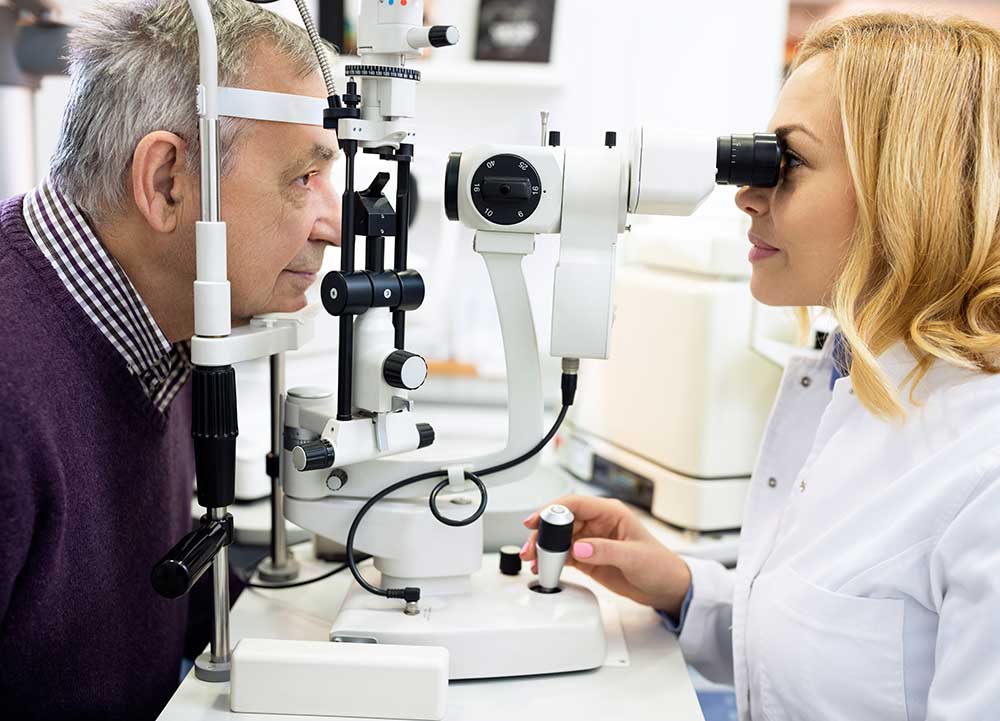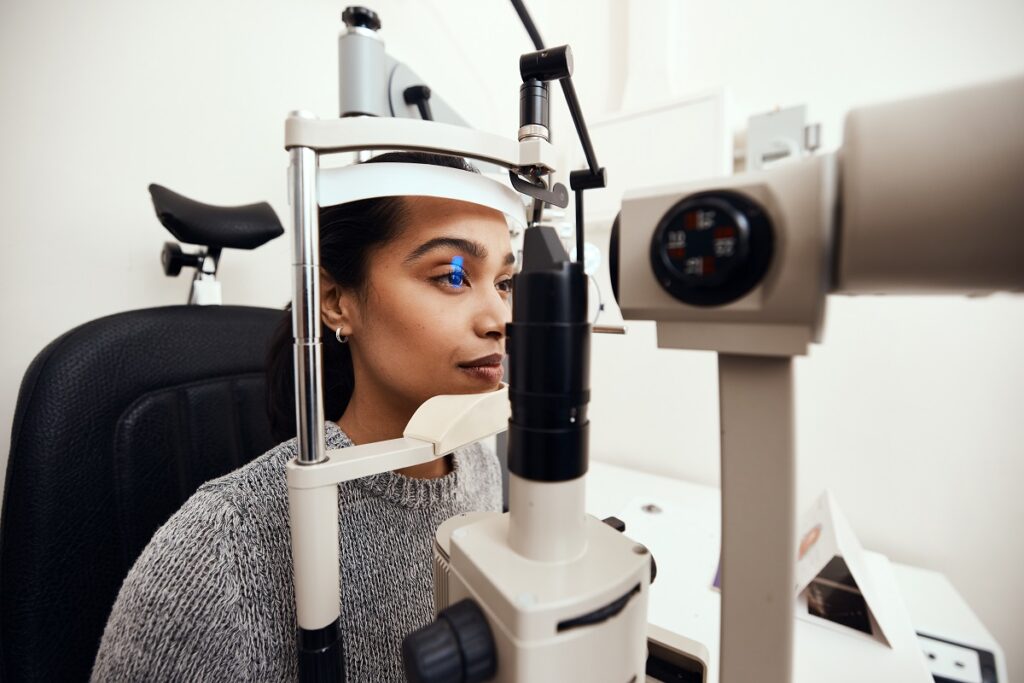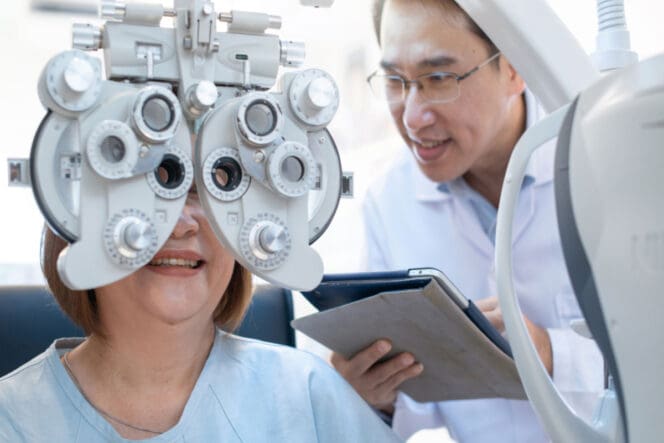Understanding the Function of Your Eye Doctor in Maintaining Vision
Wiki Article
Discovering the Most Current Technical Advancements in Optometry and What They Mean for Optometrists
In the ever-evolving field of optometry, recent technical developments are reshaping how professionals approach eye treatment. From the precision of Optical Coherence Tomography to the nuanced insights provided by AI-driven diagnostic tools, these innovations are setting new criteria in client assessment and treatment. Teleoptometry is positioned to redefine accessibility, guaranteeing that expertise transcends geographical constraints. As these developments permeate the method, optometrists are faced with the challenge of welcoming these devices to improve client end results. Yet, the concern remains: exactly how will these technological changes redefine the duties and obligations within the profession?Innovations in Diagnostic Equipment
Progressing the field of optometry, innovations in diagnostic devices have actually changed the way eye treatment professionals evaluate and diagnose aesthetic impairments and eye conditions. The previous years has observed substantial technical advancements, enabling even more detailed and accurate evaluations.One more key advancement is the intro of innovative corneal topography systems, which map the surface area curvature of the cornea with precision. These devices are especially useful for fitting call lenses and detecting corneal conditions. Digital retinal imaging has actually changed typical ophthalmoscopy, using detailed, panoramic views of the retina that facilitate thorough visual assessments.
The development of wavefront aberrometry has actually likewise been critical, allowing the evaluation of refractive mistakes with unmatched accuracy (Eye Doctor). This innovation assists in tailoring restorative lenses and boosting medical end results for refractive surgical treatments. Jointly, these diagnostic developments empower optometrists to supply exceptional individual treatment, ensuring early treatment and tailored treatment techniques, inevitably boosting aesthetic wellness outcomes
AI in Patient Management
Building on the foundation of sophisticated diagnostic tools, the consolidation of expert system (AI) in person monitoring stands for a transformative leap for optometry. AI systems are significantly used to improve effectiveness, precision, and customization in patient treatment. By examining huge amounts of information, AI can identify patterns and forecast potential ocular problems, enabling eye doctors to tailor interventions better. This ability is essential in taking care of persistent eye illness such as glaucoma and diabetic person retinopathy, where very early detection and continual monitoring are vital.Furthermore, AI-driven systems facilitate streamlined client interactions and administrative procedures. Automated organizing, digital consultations, and personalized follow-up strategies not just boost person fulfillment yet likewise optimize time administration for experts. These systems can triage patients based upon the necessity of their conditions, guaranteeing that those in critical demand receive prompt interest.
Moreover, AI improves decision-making by offering eye doctors with evidence-based referrals and treatment paths. By incorporating data from electronic wellness documents, AI devices use understandings that inform professional decisions, decreasing the danger of mistakes and boosting person results. As AI remains to progress, its function in person administration will likely broaden, improving the landscape of optometric care.
Developments in Retinal Imaging
In the realm of optometry, retinal imaging has seen impressive technological improvements that are improving diagnostic abilities and individual care. Innovations such as Optical Coherence Tomography (OCT) and fundus digital photography have actually revolutionized how eye why not try here doctors envision and analyze the retina. OCT, specifically, offers high-resolution, cross-sectional pictures of the retina, enabling for the in-depth assessment of its layers. This ability is important for early detection and management of conditions like glaucoma, diabetic person retinopathy, and age-related macular deterioration.Improved imaging techniques like OCT angiography are additional refining analysis precision. Eye Doctor Optometrist. Such improvements assist in the identification of minute retinal modifications that can indicate disease progression.
In addition, innovations in expert system are boosting retinal imaging by allowing computerized evaluation of large datasets. These systems aid eye doctors in identifying patterns a measure of pathology, therefore boosting analysis accuracy and efficiency. Jointly, these advancements are changing retinal imaging right into a foundation of contemporary eye treatment, boosting end results and broadening healing opportunities.
Teleoptometry's Expanding Function
Teleoptometry is significantly becoming a crucial part of eye care, driven by innovations in electronic communication and analysis tools. This is especially helpful in underserved and rural locations where accessibility to specialized eye care is usually limited.The integration of expert system (AI) additional improves teleoptometry, allowing the evaluation of aesthetic information and aiding in the discovery of eye problems such as glaucoma and diabetic retinopathy. AI-powered formulas can swiftly analyze intricate imaging information, giving optometrists with beneficial insights that boost medical decision-making.
In addition, teleoptometry sustains continuity of care through smooth integration with digital health records (EHRs), allowing optometrists to preserve extensive individual histories. This ensures that individuals receive constant and customized treatment also when seeking advice from various practitioners.
Regardless of these benefits, difficulties stay, consisting of making certain data protection and handling person assumptions. Nevertheless, teleoptometry stands for a considerable stride in the direction of even more easily accessible, efficient, and patient-centered eye treatment. As modern technology progresses, its function is positioned to increase further.

Future Patterns in Eye Care
A myriad of cutting-edge fads is established to reshape the future of eye treatment, driven by technical developments and the developing needs of clients. One significant pattern is the combination of expert system (AI) in diagnostics, which assures to improve the precision and efficiency of eye exams. AI algorithms can analyze huge amounts of information from retinal images, possibly discovering problems like diabetic person retinopathy and glaucoma earlier than typical methods.Furthermore, personalized medication is obtaining traction in optometry, with see this page hereditary testing educating personalized therapy plans. This approach intends to enhance person end results by tailoring treatments to specific genetic profiles. Wearable innovation, such as wise contact lenses, is likewise imminent, using real-time tracking of intraocular stress or sugar degrees, thus providing continual understandings right into systemic and eye wellness.
The adoption of augmented reality (AR) and online reality (VR) in training and patient education is an additional arising trend. These modern technologies supply immersive experiences that can enhance understanding and skills both for check here eye doctors and patients. As these trends progress, optometrists need to stay abreast of technological advancements to supply innovative care, ensuring better client outcomes and satisfaction in the dynamic landscape of eye treatment.
Conclusion

Jointly, these diagnostic improvements empower optometrists to provide superior client care, making sure early treatment and tailored therapy strategies, ultimately enhancing aesthetic health results.

As these modern technologies continue to evolve, eye doctors should adjust and incorporate them into technique, inevitably maximizing workflow effectiveness and boosting the standard of eye care delivered to patients.
Report this wiki page